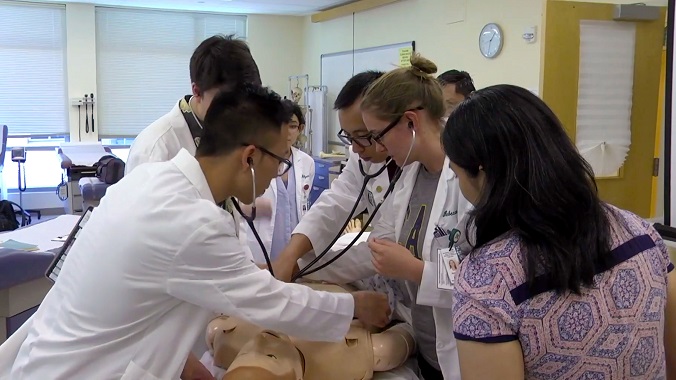
Each year University of Hawaiʻi at Mānoa medical students fan out to Hawaiʻi’s major hospitals, to begin their last two years rotating through clinical wards and shadowing practicing physicians. However, before they can do that they must complete a rigorous week of brush-up preparation courses at the John A. Burns School of Medicine (JABSOM).
The prep week, called Transition to Clerkship, includes a frank discussion about a part of life—death—where future doctors will need to shift focus to the patients’ families and the healers themselves.
Now all of a sudden, something happens and despite all of your aggressive efforts and training, they pass away or they don’t make it. Going through that emotion can be very difficult.
—Randi Olds
Randi Olds, a Kauaʻi native who is now co-chief resident of UH internal medicine, has led one of those classes.
“There’s just so many things that happen (in medicine),” said Olds. “It can be very overwhelming. Now all of a sudden, something happens and despite all of your aggressive efforts and training, they pass away or they don’t make it. Going through that emotion can be very difficult, I think, not only on residents and med students but on everyone.”
Olds, who earned her doctor of medicine degree from JABSOM in 2016, recalled the first time she witnessed death as a medical student.
“It was really difficult on me. So I think this is important for them to just get some kind of idea about what to expect or at least know how to cope with things so that they feel that they’re not alone,” said Olds.
Olds said JABSOM and its various clinical training departments make psychiatrists and psychologists available for the medical students and medical trainees, and encourages them to talk about difficult emotional situations with each other, their peers and instructors and to not be afraid to seek help.
It’s an important lesson, because doctors have the highest suicide rates among any profession, with—on average—one physician suicide per day. As healers, the doctors are the ones patient families will often need to turn to first when a loved one dies.

